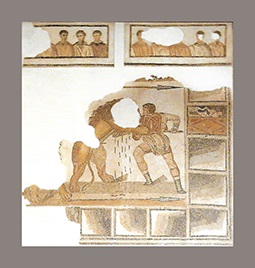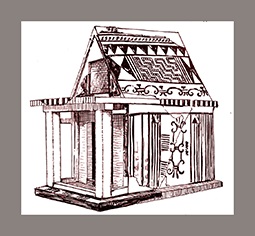Author: L. Polidoro
Download article as .pdf: Le decorazioni in pietre e marmi negli anfiteatri romani. Forme, distribuzione e colori
 Roman amphitheatres usually had marble and stone decorations, but, as of today, their analysis is quite incomplete. In particular, wall and pavement revetement slabs have often been simplified and sometimes even architectural elements, such as the monumental entrances and the porticus in summa cavea, have been overlooked. This present study intends to examine these decorations and underline their importance for the understanding of monuments, since they contributed significantly in the imagine perceived by ancient viewers. Marble and stone ornamentations were also important to determine the polychromatic character of the architectures, both by means of the materials natural colours as well as painted integrations. Furthermore, their presence highlighted specific sectors of the buildings (such as the authorities’ tribune and cult places) and, consequently, the people and the activities there hosted. Hence, they contributed to create the hierarchy of social and functional places.
Roman amphitheatres usually had marble and stone decorations, but, as of today, their analysis is quite incomplete. In particular, wall and pavement revetement slabs have often been simplified and sometimes even architectural elements, such as the monumental entrances and the porticus in summa cavea, have been overlooked. This present study intends to examine these decorations and underline their importance for the understanding of monuments, since they contributed significantly in the imagine perceived by ancient viewers. Marble and stone ornamentations were also important to determine the polychromatic character of the architectures, both by means of the materials natural colours as well as painted integrations. Furthermore, their presence highlighted specific sectors of the buildings (such as the authorities’ tribune and cult places) and, consequently, the people and the activities there hosted. Hence, they contributed to create the hierarchy of social and functional places.

